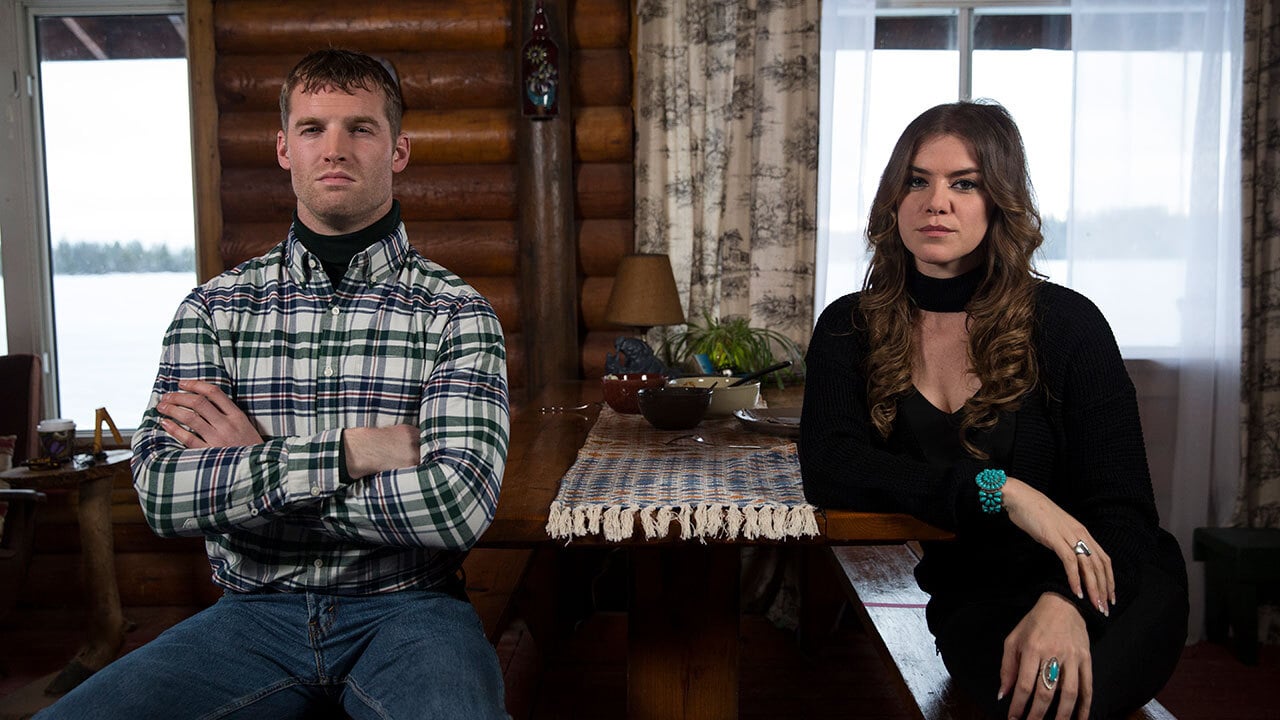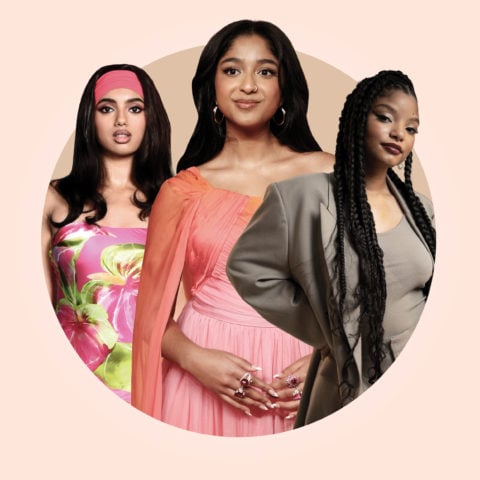How Letterkenny Got Indigenous Representation So Right
Ahead of the Canadian comedy's ninth season, writer Kelly Boutsalis explores how a show by non-Indigenous creators manages to respectfully—and accurately—represent Indigenous culture

Three years ago, two of my best friends’ husbands separately asked if I’d been watching Letterkenny, the Canadian cult comedy series centred around farmer Wayne, his sister and friends, and their small town problems. It also includes Indigenous characters. Up until that point, all I knew about the show was what I could glean from scrolling past it on Crave, with a title image that featured a plaid-wearing white man scowling in front of a barn. It didn’t particularly draw me in. But when the aforementioned husbands both mentioned that the show was actually about a small Ontario town with a reserve nearby, I knew I had to watch it for two reasons.
First off, the reserve I grew up on, Six Nations, was surrounded by small Ontario towns, many of them with barns (so, relatable), and secondly, I had to watch Letterkenny because if I tried to count the number of TV comedies I’d seen that featured Indigenous characters, I’d only be able to come up with two: the mainstream Canadian sitcom Corner Gas, whose depiction of Davis Quinton (played by Indigenous actor Lorne Cardinal) as a quirky, funny guy as opposed to a cliché I enjoyed, and drama-comedy Mohawk Girls, a funny, very Indigenous show set on the Kahnawake, Quebec reserve which is *finally* on CBC after starting out on APTN. (And no, we’re not even going to grace this discussion with the many examples of poor, one-off, Indigenous-focused storylines, like the Saved By the Bell episode about Zack Morris’s Native American ancestors.)
We’re funny people so this level of Indigenous representation within TV comedies just doesn’t make much sense. With that in mind, I quickly binged five seasons of the hit show in approximately two months during my maternity leave. And, as the Letterkenny characters would say, “pitter, patter, let’s get at ’er,” because their Indigenous characters were so spot on. They not only felt like people I knew, but were an unexpectedly accurate representation of Indigenous peoples and experiences, all wound up in a very funny, if random, Crave series. And this representation was pretty surprising, because—as my frequent IMDb visits revealed to me—the writers and creators of the show (Jared Keeso and Jacob Tierney, who play Wayne and Glen, respectively) are non-Indigenous. And I *needed* to get to the bottom of just how these two white men achieved this authenticity. So, I went straight to the source.
After starting Letterkenny, I was immediately hooked
When the “natives” (what Indigenous people are referred to in the show) first appeared in the fifth episode of the first season, I had just gotten a handle on who was who in the town of Letterkenny—the main group of the hicks (or farmers), the skids and the hockey players, all of them white—and had *just* started to get used to the unusual speech patterns of the characters. The dialogue, punctuated by puns, rhyming and wordplay, was influenced by conversations Keeso would overhear in his small hometown of Listowel, the real-life inspiration for Letterkenny. I’d even figured out some of definitions of the words that peppered a lot of their conversations, like “chorin’” (doing activities around the farm) and “dangles” (puck handling). (TBQH, I still don’t know what “rips” are, besides being drug-related and something the skids love.) One thing that I even needed translation for was the “native flu,” explained as the phenomenon of the white hockey players disappearing whenever they have to play the neighbouring reserve’s team. I died of laughter because my older brother played on many hockey teams and it made me wonder if games I’d watched against off-reserve teams had their own bouts with the native flu.
And then, the audience meets Tanis, played by Kahnawake-born actress Kaniehtiio Horn. In Timberland boots, turquoise rings and with a thick rez accent, she asserts herself as the leader of the Indigenous group, unleashing a torrent of insults at the hockey players. Tanis resembled many girls I knew from home, some of whom are still my friends. As I watched more episodes, it wasn’t just Tanis that I recognized. Everything about the show’s Indigenous characters was so familiar to me, my own experience and the people I grew up with.
The key to Letterkenny’s authenticity is collaboration
When I share with co-creator Jacob Tierney, on the phone from Montreal, just how much the show’s authenticity resonated with me, he laughs and playfully asks, pretending to be me, “What’s the trick?”
The trick, according to Tierney, turned out to be a rich collaborative environment between the Letterkenny cast and crew. Tierney says that once he and Keeso have mapped out the main plot for a season, before the script is written, they check in with all of the show’s actors, including the “natives” that accompany Tanis (Horn). This includes Axe (played by Bradley Trudeau), Shania (played by Ellyn Jade) and Slash (played by Dylan Cook). At this stage of the process, the actors are encouraged to tell Tierney and Keeso what in the upcoming storylines works for them, and what sorts of things they want their characters to say. Their feedback is then incorporated into the scripts.
Tierney had worked with Horn on several projects in the years prior to Letterkenny’s creation (she appeared in his films The Trotsky and Good Neighbours), but Keeso hadn’t, so a lot of trust was extended to the actor who plays Tanis in shaping what her character would look and sound like from the very beginning. Horn says she described Tanis’s vibe as “always having her hair and nails done” but still tough as nails.
When she asks to say her lines a certain way, or in her language of Kanien’kehá:ka (Mohawk), Horn usually hears a “Yeah, fucking go right ahead” from Tierney and Keeso, a response she’s appreciative of and hopes to see more of in the industry. “I honestly wish more collaborations [like this happened] with our people and productions, because it’s been so empowering,” Horn told me.
In season four, one of the actors in Tanis’s crew asked Horn if his character could call her ’“Auntie,” which she ran by Keeso and Tierney. The suggestion solidified the family vibe among the Indigenous crew on the show, and became a part of Horn’s character’s identity. (In case you’re wondering what an “Aunty” is within Indigenous communities, Anna Lambe, an Inuk actor who stars in the CBC series Trickster, defined Aunty energy in an Instagram caption as “wise, outspoken, and ready to throw hands whenever necessary,” words that could also apply to Tanis.)
Ellyn Jade says there’s a grounded approach to character development on the show. “I myself do live in my community [Whitesand First Nation in Thunder Bay], so there’s a lot of nuances and inside jokes, and even movements such as pointing with the lips, that [the creators are] very open to. There’s a lot of creative freedom to build who Shania is.”
“[We do that] to make sure that we’re hitting the mark, because it’s not like we live in a world where we’re drowning in Indigenous content,” Tierney says, mentioning that much of the crew is Indigenous, too. “We want to make sure that we’re doing it in a way that reflects the community in a way that makes them happy.”
And it makes Letterkenny much more enjoyable to watch
This collaboration between the show’s creators and its Indigenous cast and crew ultimately pays off. When I’m watching the show, I’m picking up most of those subtle nuances that the cast is talking about, and—as someone who’s Mohawk, too—I’m thrilled whenever Tanis tosses out a Mohawk word or phrase because it’s so familiar to my own experience. The only time I’ve heard people joking around in a mix of English and Mohawk has been when I’m with my aunts and uncles on my mom’s home reserve of Akwesasne. Definitely never on my television screen.
And these nuances are the gifts that keep on giving. On my first watch of the show, I noticed Tanis’s jewellery (how can you not, the pieces are all oversized and amazing). But during a rewatch, I picked up on the other subtle parts of her outfits, like her moccasins, similar to those I’ve seen on family members. It turns out, these small but authentic costume choices are all Horn’s doing. “She does her own wardrobe entirely. I never even get in the room,” Tierney says. “Our costume designer Ginger goes straight to her [Horn] because she wants to make sure that we’re using Indigenous designers, stores and products, and she’s so plugged into that world.”
One of my favourite things about the show is how seamlessly the Indigenous characters are woven into the rest of the groups in Letterkenny, banding together in fights or to party together. This in particular reminds me a lot of my high school years in the small town next to Six Nations—we sometimes stayed in our own crews, but we often mixed it up. Or, as Horn says, “we’re just part of a tapestry that is Letterkenny.”
“From the beginning, we definitely had a responsibility to make fully dimensional people,” says Tierney. “My favourite thing about [Tanis] is that she’s gone from being an enemy, to a friend, to a girlfriend, to an ally and to a rival. She’s allowed to live in the world, and not be one thing. And I think that that’s the best thing we can possibly do.”
Over all those seasons I came to love not just Tanis, Shania, Slash and Axe, but the hockey players, the skids, Glen, Katie, Squirrely Dan, Daryl, and even that scowling man in front of the barn, Wayne. Letterkenny is a character-driven show that has humanized a lot of the players, no matter which group they identify with, and the show’s choice to represent the Indigenous characters so well is incredibly meaningful.
“I’m making a little bit of a difference in how people might view us or perceive us,” Horn says. “And people don’t even realize they’re getting all of these messages in this silly Canadian comedy.”
Season 9 of Letterkenny premieres on December 25 on Crave









